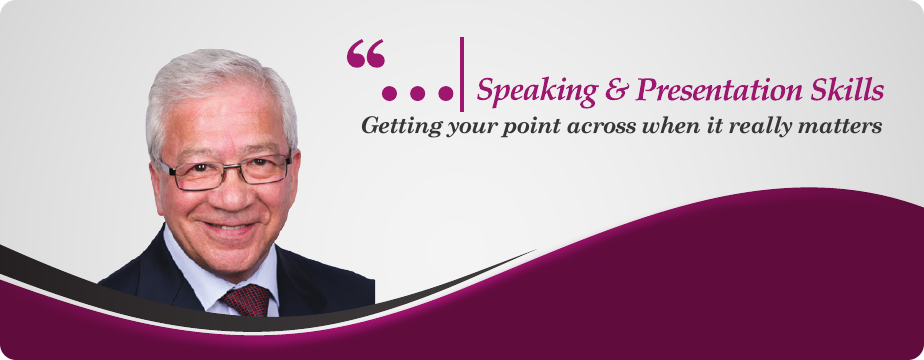Connecting with your audience
If you believe that a Presentation’s purpose is to communicate information, you need to change your thinking.
If you want to pass on facts, email or snail mail will do the job better.
When you make a live presentation, pass the facts through your personal filter, so that your listeners can understand your take on the message. Tell them what you think about the information, and what you want them to think about it.
As you prepare your Presentation, every time you convey a fact, answer the “So what?” question:
• why does your listener need to know that…
• how is it relevant…
• why is it important…
• what’s the accompanying benefit?
EFFECTIVE COMMUNICATION
To get your point accepted, consider this: the most effective way to persuade is to find out what your listeners want, then offer it to them. But how do you ask them questions during a Presentation? Because direct feedback may be difficult during a Presentation, a useful device is the Rhetorical Question.
It requires no answer, but it makes the listeners feel involved.
Because it is an obvious question, it causes them to nod their heads in agreement, as though you had asked the question for them. It’s the question they wanted to ask.
So, instead of saying, “Let me tell you why this is important”, you might ask “Why is this important?”
At the end of a presentation in which each important section was introduced by a Rhetorical Question, the listeners feel as though they have participated in a dialogue. And that’s far more satisfying than listening to a lecture or a monologue.
If you do not make the effort to engage your audience, your presentation will be one-way traffic, and it will probably fail. All people will remember is that you showed up and spoke.
It’s one of the essential lessons in learning to speak so others will listen.
Phillip

